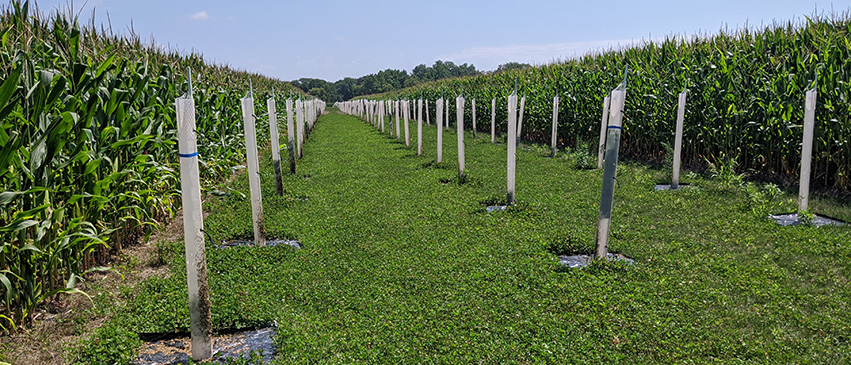Imagine a world where you walk through parks and neighborhoods full of food: fruits, nuts, greens and grains. Imagine a society where small businesses and family farms flourish. Imagine your city, state and country feeding itself without having to ship in food from far away. Imagine a future with a stable climate and equitable, economic growth. Imagine abundance, beauty, diversity and hope.
This is the goal of agroforestry. The oldest form of farming in the world, agroforestry combines trees and agriculture to produce high-value food products, increase ecological diversity and grow stability for farmers. While ancient and indigenous, this practice is just starting to gain traction in Illinois.
The Vision of Agroforestry
Throughout the Midwest, common agroforestry practices include:
- Windbreaks: planting trees to protect soil, crops and people from wind erosion or chemical drift
- Riparian buffers: planting trees to prevent erosion and enhance biodiversity along creeks, streams, rivers and other waterways
- Forest farming: producing and harvesting products such as timber, mushrooms and medicinal plants under trees
- Silvopasture: integrating trees into pastured livestock production or raising animals in the woods
- Alley cropping: planting rows of trees into fields with other crops
- Food forests: smaller-scale plantings of trees, fruits, vegetables and other edible plants in ways that mimic the natural world.
At the roots of each practice are trees that serve multiple purposes: keeping soil healthy; providing nutrients, habitat and support for crops; producing a salable product; sinking carbon; decreasing labor over time; cultivating beauty; and helping to build new markets for perennial products. The numerous benefits can make agroforestry a win-win for farmers and entrepreneurs, allowing them to harvest multiple products from the same land area while accessing new sources of income. Ultimately, agroforestry has the potential to be a low-tech, scalable farming practice that enhances profitability, ecological resilience, carbon storage, water quality and rural job creation.
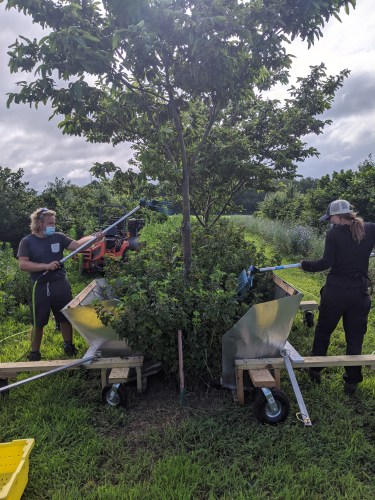
Although Illinois hosts a huge diversity of edible, wild foods and can raise thousands of varieties of fruits, vegetables, nuts, grains, medicinal plants and livestock, the state imports about 90 percent of its food. During these uncertain times, we have the opportunity to re-imagine a more local, just and sustainable food system that sows as much as it reaps. Apples, plums, elderberries, pecans, hazelnuts, pawpaws, walnuts, blackberries, raspberries and persimmons all grow wild near our backyards; farmers can help make those plants more productive by combining them with other forms of agriculture.
“Central to the vision of agroforestry is the creation of a culture within agriculture that is diverse, equitable, inclusive and joyous,” says Greta Larson, Illinois Demonstration Farm intern. “In the not-so-distant future, as agroforestry systems crop up throughout Illinois, our communities will gather post-pandemic to celebrate perennial food crops. The revelry of indulging in fresh, immunity-building fruit is just what we need!”
In Action on Illinois Farms
The Savanna Institute is a nonprofit organization devoted to laying the groundwork for widespread agroforestry in the Midwest—and we are focused on bringing this innovative approach to fields across Illinois. In 2020, the organization and its community partners established three demonstration farms across the state to showcase agroforestry in action. Last year it helped establish Wisconsin’s first public agroforestry demonstration farm at Silverwood Park in Dane County, and additional demonstration sites are planned in the coming years.
These farms are designed to show farmers, landowners and communities how to incorporate trees and perennial plantings into efficient and productive farming systems that serve as hubs of education, inspiration and movement building. Each farm will host field days and events in the coming years, growing into the communities they serve. Get to know each farm on the next page!
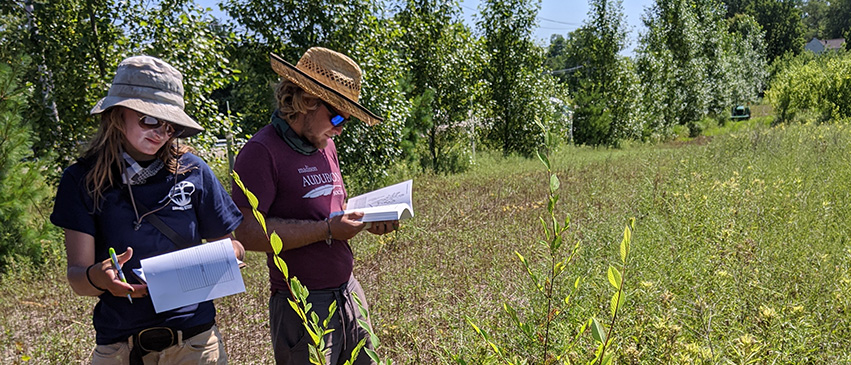
Sun Dappled Farms
Location: Hanna City, IL
Practices demonstrated: alley cropping, windbreak
Sun Dappled Farm is a private, female-owned 17-acre farm. The Potter family first transitioned five acres to alley cropping and are now working with the Savanna Institute to continue that work. Located off a busy state highway, Sun Dappled is poised to become an agroforestry destination. This site will focus on growing systems that combine ecological restoration of depleted farmland with perennial fruit and nut production. Savanna Institute work will focus on designs for revitalization that include soil regeneration, water management, and how the landscape informs design and farming decisions. The organization eventually hopes to open this site to the public.
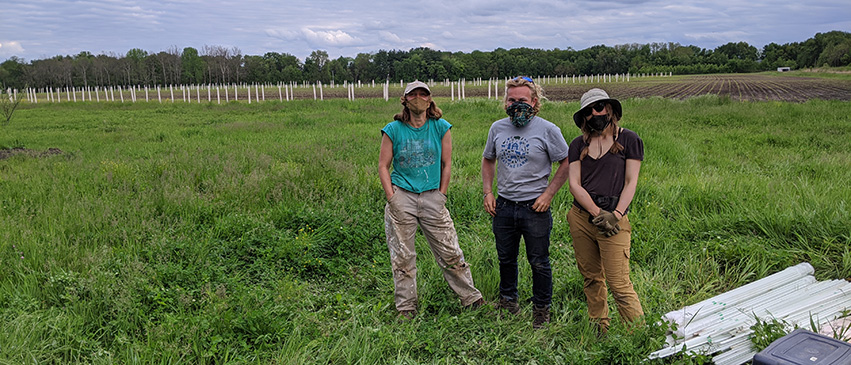
Allerton Park
Location: Monticello, IL
Practices demonstrated: alley cropping
Allerton Park & Retreat Center is a marvel of central Illinois. Since 2014, the Savanna Institute has worked with Allerton Park on a two-acre agroforestry pilot project and is excited to expand. This demonstration features rows of hardwood timber and native trees with alleys of annual row-crop rotation and hosts a groundcover management experiment to explore best practices for working with native prairie plantings in agroforestry systems. Savanna Institute has been working with the current farmer and landowner to create a design and relationship that is mutually beneficial.
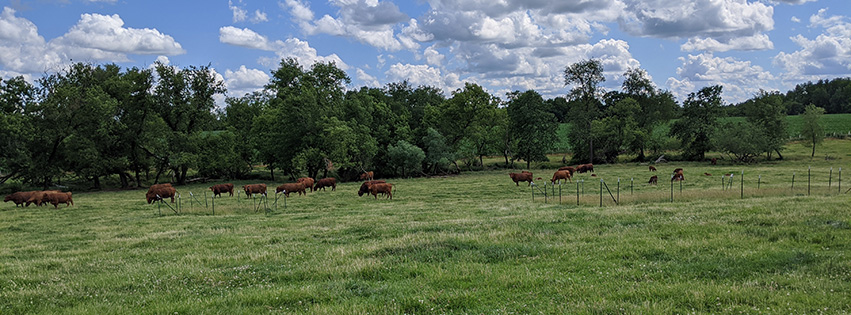
Fields Restored
Location: Oregon, IL
Practices demonstrated: alley cropping, silvopasture, riparian buffer
Fields Restored is a privately owned, 166-acre row-crop farm. The Williams family first worked with the Savanna Institute to transition 20 acres to alley cropping in 2015. After seeing the rapid revitalization of this parcel, they are now committed to converting more of their farm into the prime agroforestry demonstration farm in northern Illinois. 2020 work focuses on five acres of actively grazed pasture, where Savanna Institute is in the process of establishing a silvopasture experiment and riparian buffer to stabilize an eroded waterway. It will feature islands of fodder trees (black locust, mulberry, persimmon, and oak) planted directly into pasture and fenced off from livestock. The riparian buffer design includes trees and shrubs for restoration, beauty and profit. PM
Kaitie Adams serves as Illinois Demonstration Farm Manager for the Savanna Institute. For more information, visit savannainstitute.org or email [email protected].


